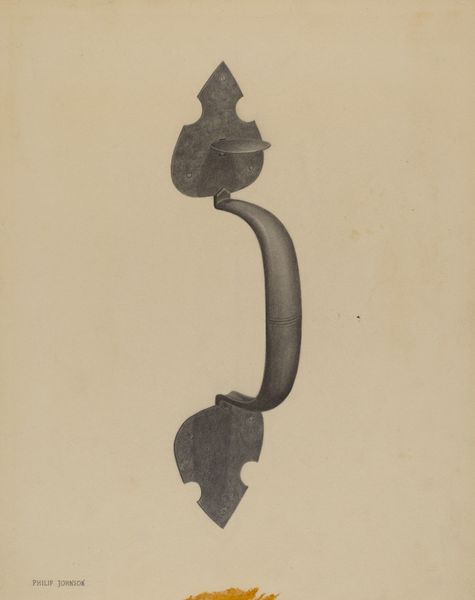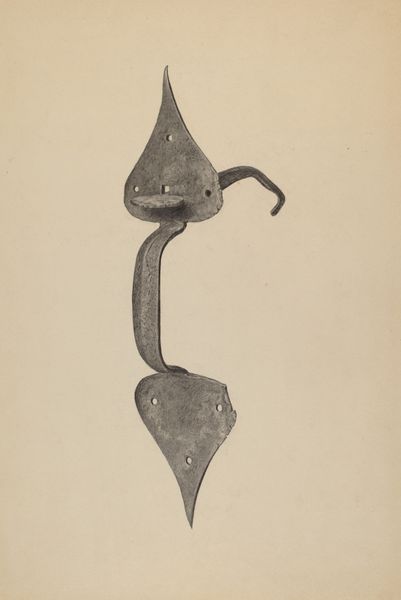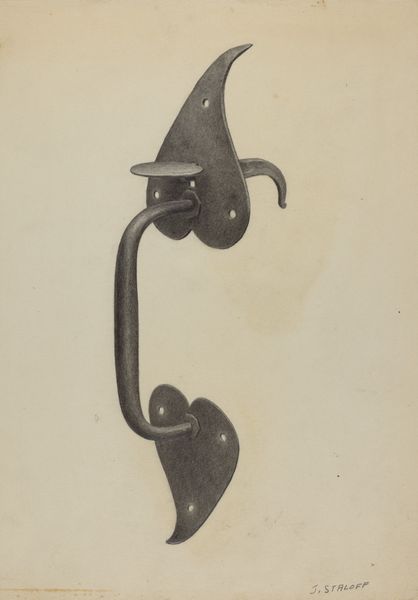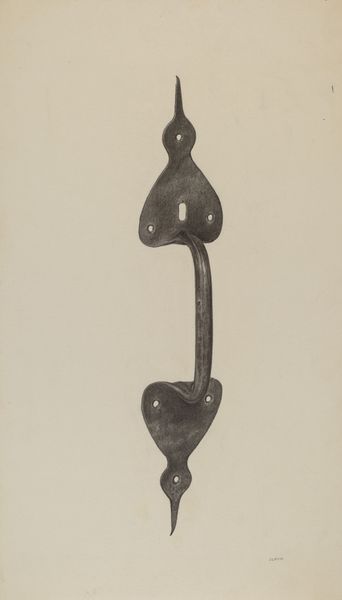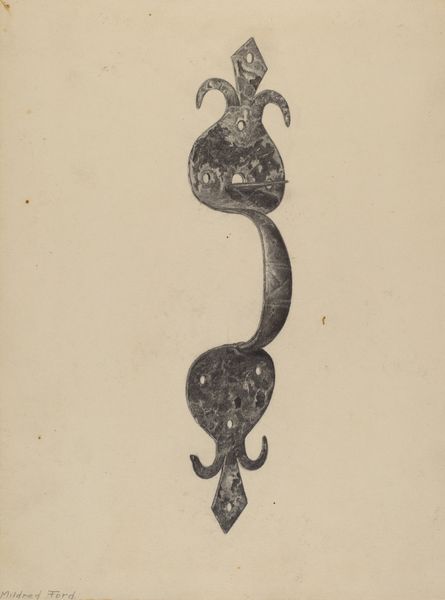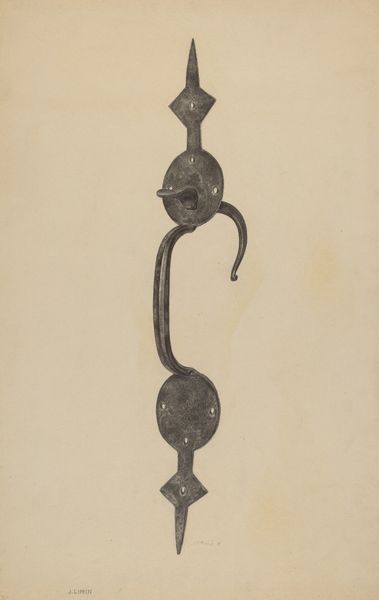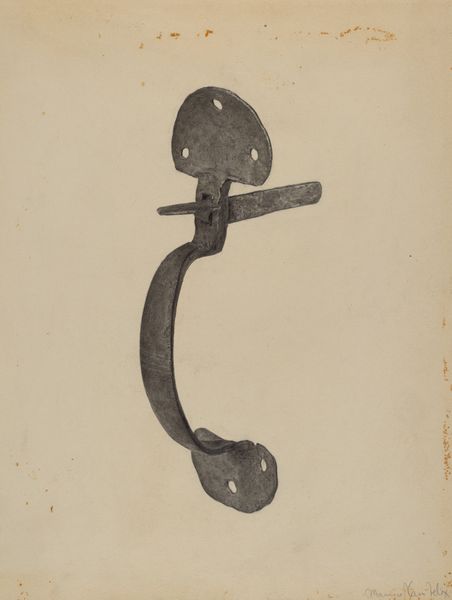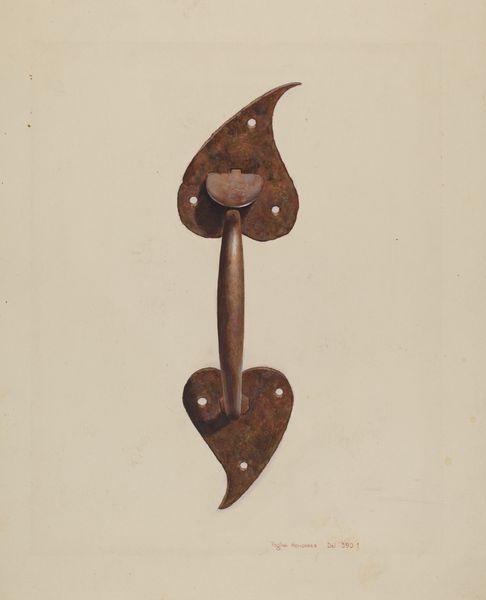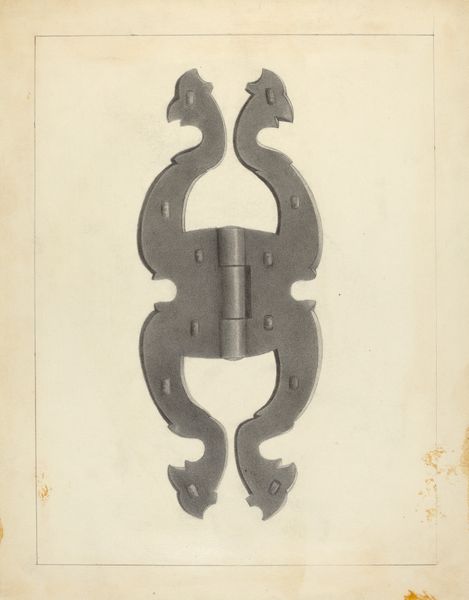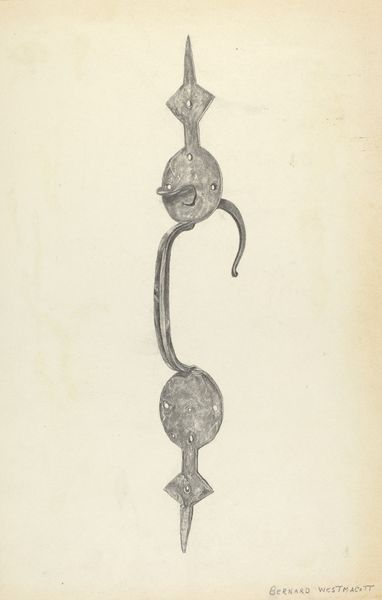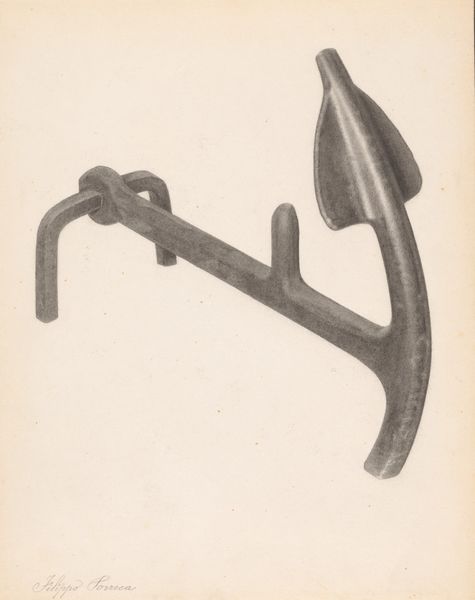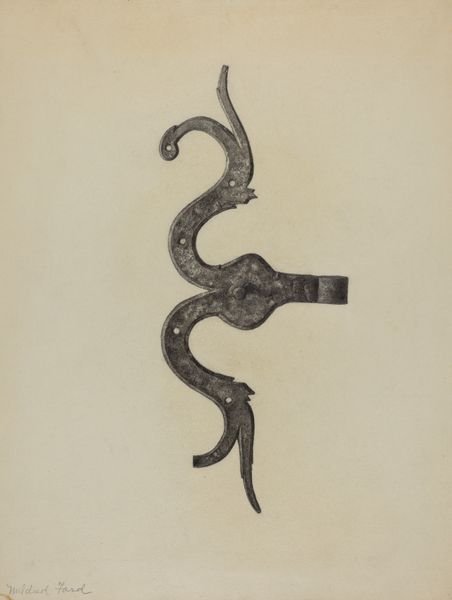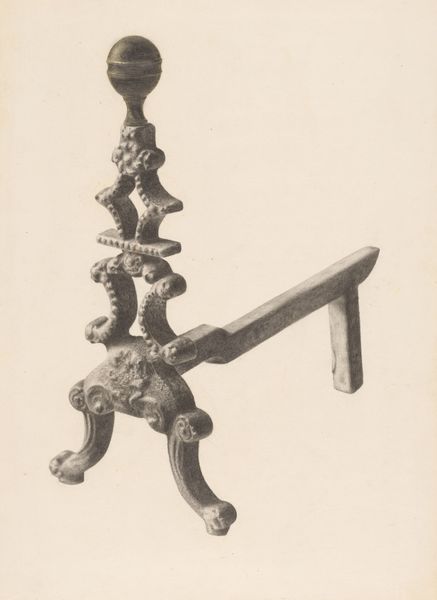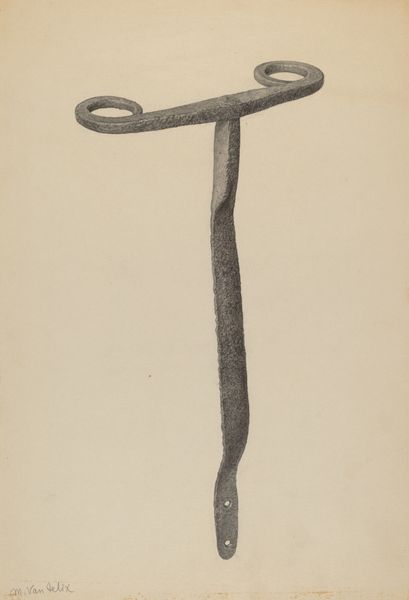
drawing, paper, pencil
#
pencil drawn
#
drawing
#
paper
#
pencil drawing
#
geometric
#
pencil
Dimensions: overall: 35.6 x 24.7 cm (14 x 9 3/4 in.)
Copyright: National Gallery of Art: CC0 1.0
Editor: This drawing, dating to around 1938, is simply called "Door Handle" by Herman Bader, rendered in pencil on paper. It feels so utilitarian, almost industrial in its stark depiction. What do you see in this piece beyond a simple rendering? Curator: I see a fascinating glimpse into the everyday materiality of the 1930s. It prompts questions about the division of labor, doesn’t it? Was Bader celebrating functional design, or documenting a disappearing craft? The precise detail suggests an intimate knowledge of the metalwork, hinting at the labor and the hand of the maker of this object. Editor: That’s a really interesting point – the 'hand of the maker' extends beyond just Bader's drawing, encompassing the artisan who originally forged the handle. Do you think the choice of pencil is significant, too, relating to ideas around artistic process? Curator: Absolutely. Pencil, as a relatively accessible material, democratizes the act of creation. Consider also its use; does it elevate a mundane object to the realm of art, or bring art closer to the functional object, and the hands that would interact with it daily? How might the cultural values and access influence the making and the use of door handles at that moment in time? Editor: So, by choosing this everyday object, and a humble material like pencil, Bader invites us to reconsider the value we place on functional objects and the people who make them? Curator: Precisely. We are drawn into a conversation that challenges boundaries – craft versus art, mass-produced versus handmade, high culture versus everyday life. That interplay is, in my opinion, what gives the artwork its true significance. Editor: I never thought a drawing of a door handle could raise so many questions about social context and materiality! Curator: That’s the power of seeing art through a materialist lens. It encourages us to consider the means of production, the labor involved, and the cultural values embedded in even the most seemingly ordinary things.
Comments
No comments
Be the first to comment and join the conversation on the ultimate creative platform.
